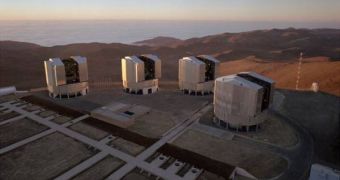Bigger is always better in astronomy, experts say, and the phrase especially holds true for telescopes. Making use of new technologies that allow for virtually instantaneous connections between any points on Earth, experts from more than 16 observatories on six continents have joined their resources together, and have created the largest virtual telescope in the world, able to resolve details that no other single one can. All data collected from the observatories, which are directed towards the same point in the sky, are centralized in a command center located in the Netherlands.
In addition to the obvious advantages brought forth by their combined observation power, the telescopes also cooperate in hunting down ToPs (Targets of Opportunity). Supernova explosions and gamma-ray bursts are among the phenomena that last for a very short time, and which are then gone forever. Because these telescopes can almost instantly communicate between them, they can alert each other if something is going on in the night sky, and they all point their lenses in that direction as soon as possible after they receive word of this.
“The amounts of data being transferred required close co-operation between the EVN [European VLBI Network], the Dutch research and educational network SURFNet, the pan-European GÉANT research network, and national and transcontinental networks in- and outside of Europe,” Joint Institute for VLBI Europe (JIVE) Head of Technical Operations and R&D Arpad Szomoru says.
“The global radio astronomy community is gaining crucial experience from the activities that come from ExPReS. [It] has shown that such interdisciplinary collaborations can revolutionise science,” the JIVE Director, Huib van Langevelde, adds, quoted by ScienceDaily.
“In November last year, astronomers noticed flaring activity from SS433 and alerted other observatories,” Kristine Yun, ExPReS (Express Production Real-time e-VLBI Service) public outreach officer, explains. ExPReS is the project that made the intercontinental astronomical instrument possible. The SS433 formation is definitely among the most interesting objects in the Milky Way, comprising a star orbiting either a neutron star or a black hole. The two bodies exchange hydrogen in an explosive manner, making for interesting celestial fireworks.

 14 DAY TRIAL //
14 DAY TRIAL //